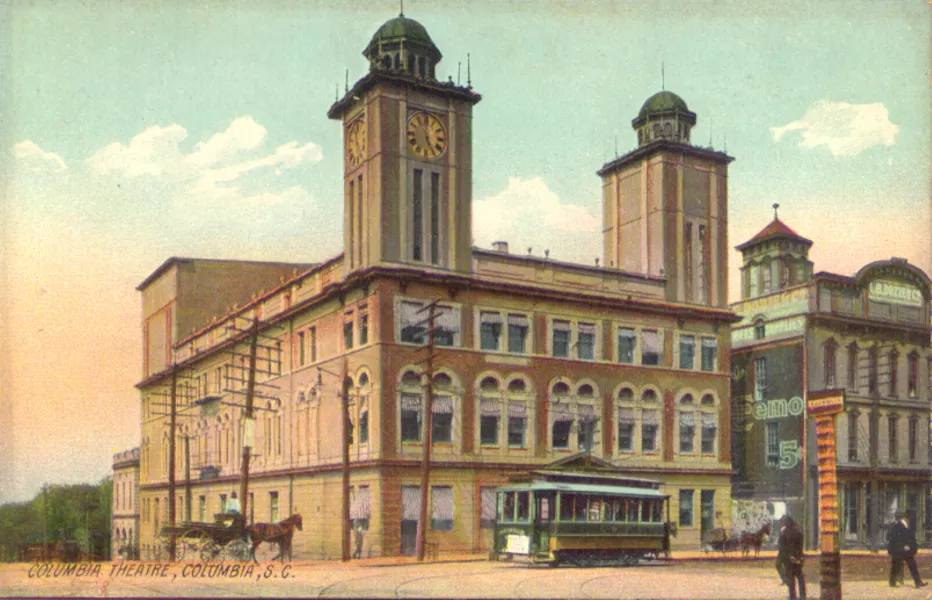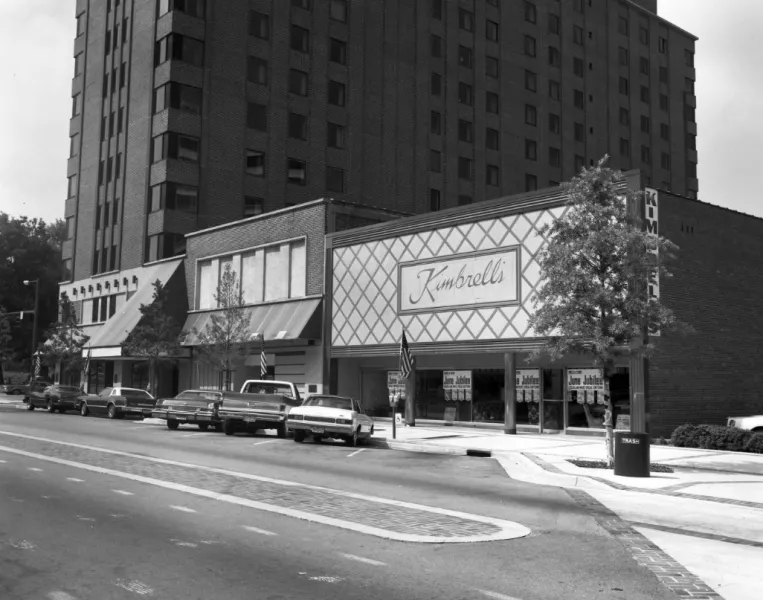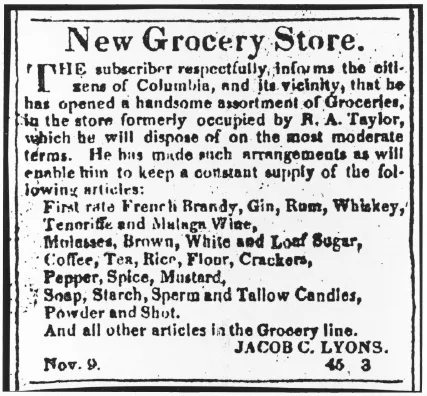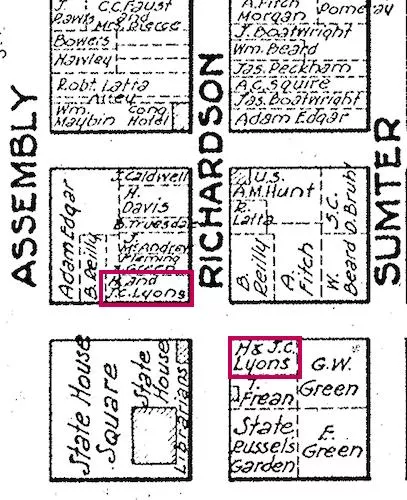Northwest Corner of Main and Gervais Streets
Public Plaza
At least four other buildings have stood at the location of this plaza before the construction of the skyscraper to the west at 1201 Main Street. Each building was constructed for very different purposes. Before the Civil War, the Lyons family operated an oyster bar and saloon—popular with South Carolina College students—and later a grocery. After Main Street burned in February 1865, a two-story commercial building was erected here between 1884 and 1888.That structure was demolished in late 1899 by A.G. LaMotte, who purchased the building (not the land) and intended to use the materials elsewhere. Columbia’s second city hall and opera house, a grand Second Renaissance Revival style landmark designed by architect Frank P. Milburn, was erected in 1900. In 1939, the opera house was demolished for construction of the Wade Hampton Hotel, an austere, red-brick skyscraper designed by the prestigious Chicago architectural firm of Holabird and Root that opened in 1940. Developers demolished the hotel-turned-USC dormitory in 1985 to make way for this plaza and the Capitol Center.
Site of Lyons Grocery and Oyster Saloon
Isaac Lyons (1774-1843) and his two eldest sons, Henry (1805-1858) and Jacob Cohen Lyons (1807-1887), operated an oyster saloon at this site following their arrival from Charleston in the early 1820s. The saloon was popular with South Carolina College students, and alumnus J. Marion Sims recalled that Isaac “was one of the kindest and best of men, particularly to the students,” and would extend to them any amount of credit for any length of time. Following Isaac’s death in 1843, Jacob continued to operate a grocery at this site and leased out space to other merchants. The structure was destroyed during the Burning of Columbia in February 1865, and Jacob and his wife, Louisa Elizabeth Hart Lyons (1814 - 1819), soon left the state and were eventually buried in New Orleans.
Isaac and his wife, Rachel Cohen Lyons (1775-1838), had four other children. The eldest, Isabelle Rebecca Lyons (1804-1895), married Moses Cohen Mordecai (1804 - 1888), a wealthy Charlestonian and future state senator. Their three youngest sons, Theodore Hart (1817-1837), Isaac (1811-1837) and Joseph (1813-1839), all died of tuberculosis within an 18-month span and share a tombstone at Hebrew Benevolent Society Cemetery in Columbia (Isaac was a founding member of the society in 1826).



